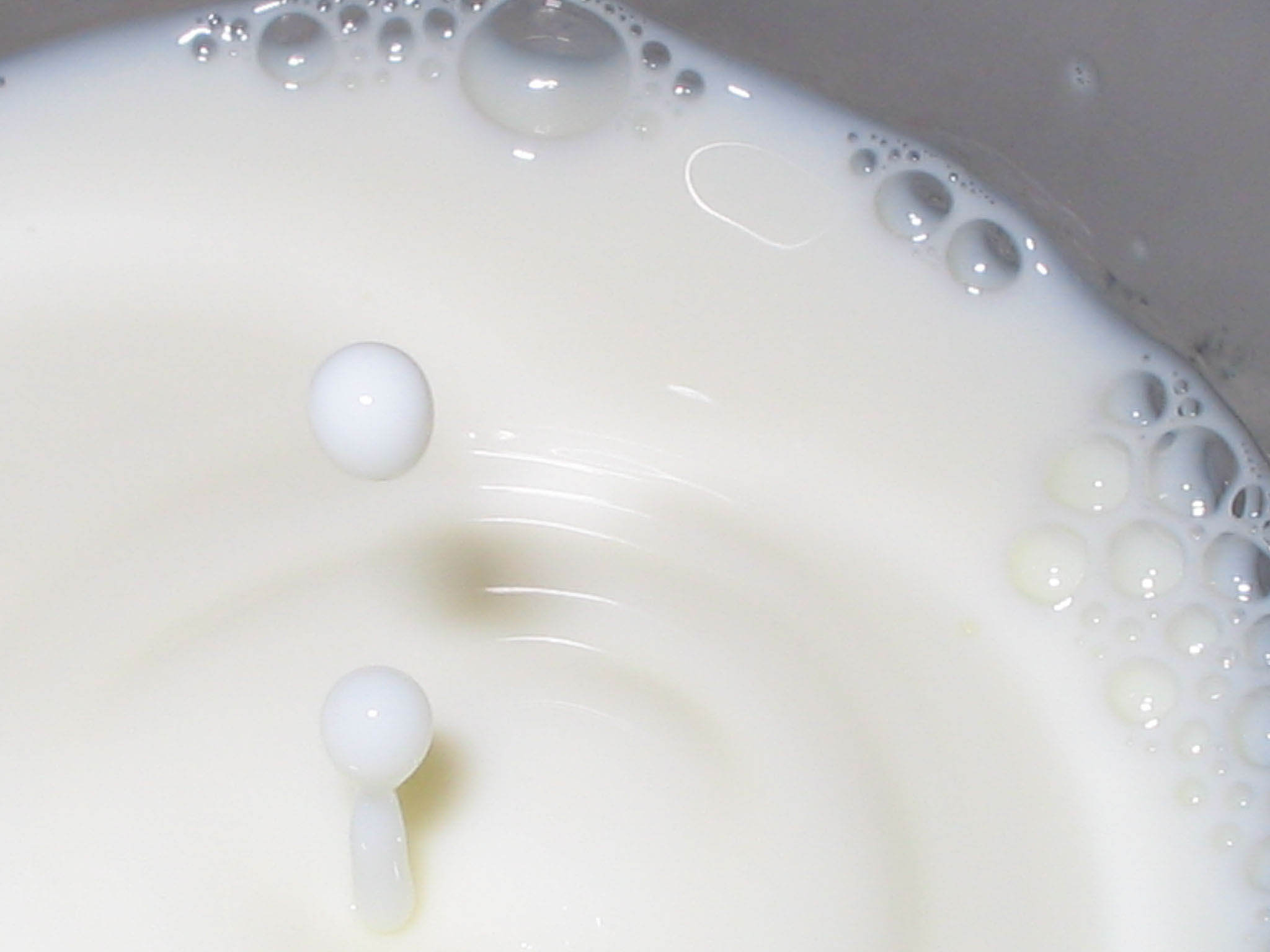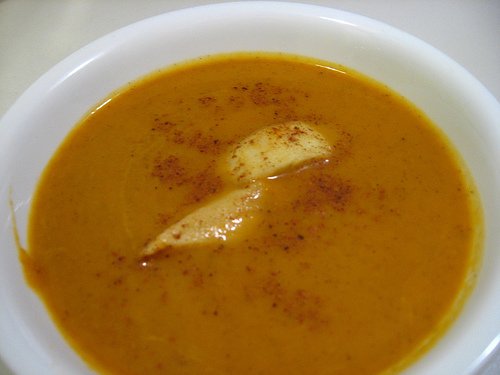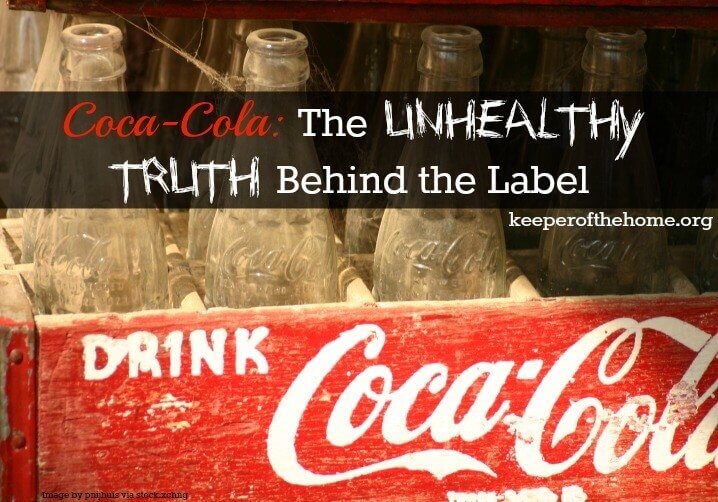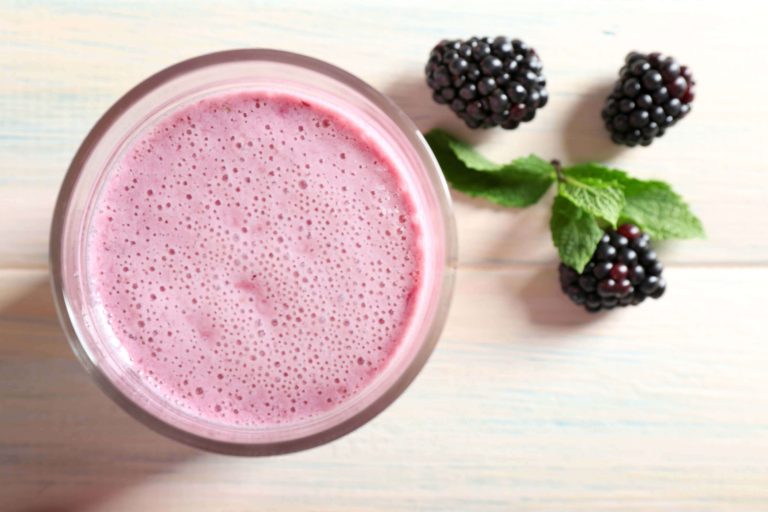Raw Milk Substitute for Cultured Dairy Products

Image by tellgraf
Raw milk is a luxury around this household. As I’ve mentioned before, we pay about $18 a gallon for our grass-fed, raw milk from a nearby farm. It is truly my liquid gold and I consider it more of a supplement for our family’s health than just another food or ingredient in my fridge.
I know that I’m not the only one. For some of you, the cost simply makes buying raw milk an impossibility. For others, raw milk is illegal where you live or there is nowhere close enough for you to purchase it. You wish you could get it, but you just can’t, and so you’re left wondering what are the next best options in your situation.
A few weeks ago, I stumbled upon an excellent substitute for those of us who are making do with what we have and cannot buy any or much raw milk. I was reading Sue Gregg’s Breakfast cookbook, when a recipe for Dan’s Milk caught my eye.
Dan’s Milk
Mix together:
3 1/2 cups fat free/skim milk (preferably organic and NOT ultra-pasteurized or UHT)
5 Tbsp heavy cream (pasteurized, but NOT ultra-pasteurized or UHT)
The basic concept behind this recipe is this: by using fat-free milk and adding cream, you are still not using a “raw” milk but you are avoiding the homogenization of the milk and cream (which alters fat structure and contributes to many health issues), which is one of the major issues with conventional store-bought milk. The other issues are pasteurization (killing important enzymes and destroying nutrients), as well as the quality of care and proper feed (ie. green grass) received (or likely not received) by the cows. For more on the issues with conventional milk and the reasons to choose raw milk, see the website Real Milk or this excellent post on it’s benefits.
Obviously, this recipe does not address the issues of pasteurization or the ultimate quality of the milk. I still wouldn’t recommend this milk for regular drinking and cooking. As it has been pasteurized, it lacks the enzymes to make it very digestible.
However, this milk is ideal for culturing! Since we buy only a small amount of raw milk, I keep it entirely for drinking and using as is and unfortunately am not able to use it for anything else. I then buy organic milk to use for making kefir and yogurt, both of which are cultured dairy products with beneficial bacteria to aid in digestion and absorption of nutrients.
I’ve always hated that I had to use homogenized milk for this purpose and was so thrilled to figure out a solution to get around it. Culturing really helps to minimize the loss of enzymes due to pasteurization, so this is very much a win-win solution!
Making your own yogurt and kefir is very simple to do. Here is a link to my own tutorial for making homemade yogurt. For those who would like to try kefir, here is a link to an excellent explanation of what kefir is and a tutorial on making it. One place to purchase kefir grains is through Cultures for Health (also a great place for lots of other cultures and starters).
I wanted to double check that this was a good idea, so I emailed the Weston Price Foundation just to be sure. I was pleased to get a very fast response from Sally Fallon-Morell herself (author of Nourishing Traditions), letting me know that yes, this is a great substitute for those of us who aren’t able to use raw milk for our homemade culturing purposes!
Edit: Several people have mentioned that skim milk often includes dried skim milk powder, something I hadn’t heard of before. I did check out Weston Price and read that the dried milk powder is often included (though not always listed in the ingredients) and that is is harmful because of the high temperatures at which it is processed and how the cholesterol is oxidized. I did a bit of research and confirmed that in Canada the dairy labeling laws are very strict and every ingredient absolutely must be listed. Read your labels and if it only includes milk and no milk powder, then your milk is fine to use. If it does include milk powder, look for another brand. I am using Valley Pride and/or Avalon (both from the same dairy in BC) and they do not contain skim milk powder. In the US, the labeling laws may not be as strict. Still, read your labels and if you are at all unsure, I would definitely not hesitate to contact the dairy or the company themselves and ask whether the milk that you are buying includes milk powder in it (and if so, find a different brand!). Thanks for the heads up about this issue, ladies!
Do you culture your own dairy products? Has anyone else been finding ways to substitute when raw milk just isn’t available?







Oh, I love this post. We are VERY fortunate to be able to purchase raw milk at a farm just 6 miles from our home. (I actually found the farm by following a link you posted—thank you!) And it’s only $6/gallon.
I also don’t use it for making yogurt for cost reasons, so I love this suggestion. Thank you.
Ah…I know where you’re coming from. We used to buy raw milk until we moved to the farm and now we are selling raw goat milk shares and soon cow. Ours is $8 a gallon which is a fortune to some people, but when you start feeding and caring for them (the animals) like I do, you realize that the cost isn’t that great for everything that we as farmers put into it!!
I wish you all success in your endevours to find a healthy and reasonable source for raw milk =)
Jenna
Stephanie, raw milk is illegal where we live. We purchase milk from a local farm that delivers. The farm though not certified organic, practices organically and allows their cows to graze all day, though they do provide some additional supplemental feed in the barns–so not purely grass-fed but definitely healthier and humane. All their milk is delivered in glass bottles and we buy their cream top whole milk, which is unhomogenized. The price of a gallon of their milk is about the price of a gallon of organic milk in our stores, so it’s quite reasonable.
You need to move to Kansas, girl. 😉 I found a farm with raw milk a few months ago. We pay $3.50 per gallon. My kids love going to see “our milk cows.”
Stephanie,
I have not tried culturing my dairy products (I’m not quite there on the baby step trail!), but I wanted to let your readers know of a resource I thought they might find helpful. If you live in the Midwest United States and have access to a Hy-Vee grocery store, their store-brand organic milk is NON-homogenized, and is VAT pasteruized, which means it is heated to a lower temperature than conventional pasteurization, so it retains more of the enzymes than other milks. We cannot fit raw milk into our budget right now, but this is the closest thing we have been able to find in a store. It has the Hy-Vee label on it, but it is actually put out by Kalona Organics (www.kalonaorganics.com), so you might want to check and see if they sell it in your area as well. We love it!
I searched for a low-pasteurized milk to culture my yogurt from Cultures for Health and thankfully found a great milk by Farmers’ Creamery at our natural food store. It is a bit more expensive than all of the organic UHT milks but it is very worth it. It is non-homogenized as well! I love it.
Thanks for the tip…very interesting. Raw milk isn’t readily available to us, so I may try this.
If you moved to a location where there was neither raw nor organic milk available, what would you use for your family?
It surprises me that the WAP Foundation and Sally Fallon have given their okay to this. According to this article ( http://www.westonaprice.org/modernfood/dirty-secrets.html ) “When they remove the fat to make reduced fat milks, they replace the fat with powdered milk concentrate, which is formed by high temperature spray drying. All reduced-fat milks have dried skim milk added to give them body, although this ingredient is not usually on the labels. The result is a very high-protein, lowfat product. Because the body uses up many nutrients to assimilate protein—especially the nutrients contained in animal fat—such doctored milk can quickly lead to nutrient deficiencies. ”
I’m blessed to be able to get raw milk for $6/gallon, so thankfully I don’t have to worry about it. I’m just curious about the seeming inconsistency.
Very interesting, although I am also so-not-there with the baby steps. Not sure I ever will be considering I can’t get many things where I live, including raw milk. We sometimes can’t even afford regular organic milk, especially when it comes to cheese, so sometimes my husband eats the regular stuff and my daughter gets the organic…we do what we can but sometimes that can’t even be done. Espeically with rising and rising and rising prices.
I’ve tried making yogurt a few times but haven’t been successful at all. My family really doesn’t like it (will not eat it, I end up hiding it in something which is not the point…even in smoothies they can tell). I’ve been hoping to try it again, but this time with a culture. I’ve been doing it just with store bought yogurt as a starter. Is a culture what comes in a little box that you use instead of using a Tablespoon or two of plain yogurt? Would you recommend that place Cultures for Health for Canadians too? Or is there somewhere else? I found a culture, I think, at the local grocery store but it doesn’t look like that good of a quality. My friend told me it did make her yogurt more like store-bought though. I’d love to have my family not be able to really tell the difference since we eat a lot of store bought yogurt and it is pricey. I’d love to be able to get a better quality food AND for cheaper….if possible I love it when that works out!
Hi Nola, I just wanted to say that we’re in Canada too and I just ordered from Cultures for Health, and had no problem getting them to ship up here and it wasn’t very expensive, as I recall. I ordered Kombucha and Kefir starters, so I’m anxiously awaiting their arrival!
About yogurt making, I think homemade yogurt is so much better tasting than anything you can buy in the store, but perhaps it’s also in the method. I tried making it in the Crockpot a few times but after the first time, it never came out right so I gave that up and now I make it with a really simple method and it comes out super delicious every time. The first time I started with a high-quality organic store-bought plain yogurt (for the culture/starter), and then every time after I just make sure to save a 1/2 cup (per gallon of milk, this makes a gallon of yogurt) for the next batch. I find that adding too much culture/starter results in the yogurt not turning out well; less is better, as too much crowds the bacteria (something like that anyway).
So here’s how I do it: I heat one gallon of organic whole milk in a stainless steel pot until it is scalded (skin on top and bubbling around the edges). Make sure you heat on medium to low heat to avoid burning the milk. Then I take it off the heat and cool it until I can comfortably stick my finger in it and hold it there (just warm). At this point, I mix the 1/2 cup culture/starter with one or two cups of the milk (dipped out into a small bowl), then pour the whole thing back into the pot of milk. I use my whisk to mix it really well. Now, I get my gallon glass jar ready (you can buy pickles at Costco and reuse the huge jar) by rinsing the inside and lid with just-boiled water. I dry it out carefully with a clean kitchen towel, then place it in the sink. I then carefully pour the milk into the jar. It may seem like it won’t all fit but it will. I then screw the lid on tight and place the jar of milk on the lowest rack in my oven on a heating pad set on high. I close the door and let it be, undisturbed, for 12 hours. At this point I turn down the heating pad to low, then leave it for another 12 hours. In total, it should culture for 24 hours. After this I place it in the fridge to chill overnight or at least 8 hours. Now it is ready to eat! This method makes extremely delicious yogurt and after the lengthy culturing, it is virtually lactose-free. My whole family likes it very well. It may seem like a lot of steps but it’s really not and you just forget about it in between steps. Also, I find that my husband really likes it when I serve it to him with blueberries and raw honey!
I hear you about the rising and rising prices….I go to the store and something that was just such and such a price is now so much more all of a sudden! And no one ever explains why! It is tough, and very challenging. At least here in Canada we don’t have the artificial growth hormones in our milk, so if you can’t get organic, at least you aren’t consuming something terrible. I feel like the milk here is somewhat more natural than the regular milk in the States, and I’ve lived in both places. Making yogurt the way I do is really inexpensive, in the sense that you get a whole gallon of yogurt for the price of a gallon of milk, and where I am, a small container of organic yogurt costs so much, around $6 or $7! So making it yourself, you get 4x as much for just a dollar or two more, if you buy organic milk.
Hope this helps a bit. Good luck in all your endeavors! 🙂
I have been making kefir for many years from a cauliflower-looking “grain” that came from a friend of a friend from Europe. Although it takes a few batches to adjust, it has worked well in both pasteurized and raw milk. It doubles in size about every month, and I often throw parts away when it gets too big for my needs and I don’t know anyone who wants some. I would gladly share it when it needs dividing (I live in central Alberta).
Blessings to all!
Hello Stephanie,
I would love the email to this woman. I live in central Alberta and have been trying to get kefir grains for some time, but haven’t been able to. I would love to have some from this woman!
Please may I be connected to this woman?
Charmayne
@Charm,
I’m from central Alberta as well and have been looking for a source of Kefir grains from around here. I might try placing a wanted ad on Kijiji but if possible, could I get the email as well, or pass mine along please with an explanation.
Thank you,
Angel
@Angel, At Edmonton Alberta’s “Planet Organic” you can buy kefir starter.
@Julie,
Hi Julie,
I live in central Alberta and I am looking for some kifir grains as well. Could you please pass on my e-mail to Julie.
Thanks
Ken
@Julie, My fam has recently moved to central AB and I am looking for R/goats milk as my son has issues with dairy, amongst other things. Any suggestions or advice?
@Julie,
Hi Julie, hope you answer.
I need kefir starter. Please email, I’m in edmonton. thanks
@Julie, julie, I live in edmonton and I am very interested in receiving some kefir grains
Good information. I needed to be reminded of what milk products I am giving my family. We recently moved & our Safeway has very limited Organic choices. I have been just buying whatever they have and after reading this I checked out realmilk.com & got some ideas on how to get Raw milk.
I make my own Kifer from grains that someone passed along to me. It tastes completely different from Flavored Kifer at the store (very distinct & sour). I mostly use it in smoothies as there is enough other stuff to mask the flavor.
WOW! $18 a gallon for raw milk. There is no way I would even consider buying it at that price. I almost hate to tell you that we found an Amish farmer here in Kansas that sells it to us for only $2.50 a gallon. We feel so blessed. I guess I should not complain about the 30 mile drive one way to get it.
After reading everything WAP has to say about milk, I couldn’t deal with a substitute. The low-fat and fat-free milk, beyond just the fact that it’s processed, have oxidized cholesterol in them, which I just can’t stand. Raw milk is illegal here so we simply do not do milk. We do raw milk cheese sometimes (which is legal), but we do not drink milk. Instead we focus on other whole foods. We also have started getting into water kefir instead of ever trying milk kefir. I don’t know — I just can’t get past the way they process the milk to find any acceptable substitute, but I tend to be very black-and-white about things.
I am shocked at how much raw milk costs there. We thought we were paying a lot at $9.00 a gallon for organic, raw, pastured milk here. Before we moved, we paid $6.00 a gallon.
However, I do like this idea, as it can save me some money by using organic pastured, but pasteurized, milk for yogurt. Though, I have to say that our yogurt turns out much thicker and nicer with the raw milk.
If you have time…and ONLY if you have time…would you mind telling me where you get that raw milk? I am interested and live locally.
Thanks sooo much!
Blessings,
Camille
Oh I feel so very blessed after reading what you pay for raw milk. My parents provide us with very healthy goats milk for 1/2 the year and then other times I drive about 10 miles to buy hormone free cows milk for $4 a gallon.
I have heard of the process that you spoke of as my mother-in-law has done that for many years.
I have made my own yogurt many times but have yet to try making kefir.
Thank you so much for this post. I cannot find raw milk anywhere. This is very valuable information.
I’m paying close to $20/gal, but i don’t use all that much. (Only me drinking, not a family.) It only comes quart sizes.
But i’m wondering about the recommendations you are making – i recently heard that “skim” or fat-free milk has powdered fat-free milk added because otherwise it is too think & watery. Powdered milk is not good, ever. It does bad things to the milk protein. Have you heard of this?
Really appreciate your site, BTW. Good info. Hope you’re healing well.
I’m glad to hear that so many of you have wonderful sources of either raw milk or of grass-fed milk that is only lightly pasteurized and non-homogenized. That’s fantastic!
Amy @ Finer Things, wish I could join you in Kansas! 🙂
Kika, if I was unable to get raw milk then we would stop drinking milk altogether. Instead, I would use a bit of soaked, homemade almond milk and hemp seed milk, and probably also some coconut tonic (see The Nourishing Gourmet for more on this- she has a great post on it) for those times when we just really wanted something milk-like. If I could still get organic milk, we would continue to do cultured dairy. If I couldn’t get organic milk to culture, I would make water kefir instead for the beneficial bacteria and and we would probably have dairy (like yogurt) only very occasionally as a treat, just because it would be hard for my family to give it up 100%. I would make my smoothies using soaked nuts and seeds as a base instead. We would probably increase our meat/poultry/egg consumption a bit to make up for the lost animal protein.
Nola, I’ve purchased from Cultures for Health and it’s still worth it with the extra in shipping costs. They’re really a great company and their cultures are very good. Perhaps with a really good yogurt culture you could make something you’re happier with? And you could try the powdered yogurt starter to see if it makes a nicer yogurt for you. It’s more expensive because you have to buy new starters all the time, but I’m sure it would still save you money overall, compared to buying store yogurt.
Julie, that’s just what my kefir grains are like- little cauliflower pieces! It’s so simple to make, and we just love using it, in smoothies and also sometimes just plain.
Kate, I can understand your perspective. Honestly, I would love to be black and white about the issue, too. But, I still need to work with the budget that we have, and a family that really enjoys dairy products. I am learning to come to the best compromises that I can come to, and including as much of the really good stuff as I can afford to do.
Camille, I get my raw milk from Home on the Range, in Chilliwack. They deliver it to several drops points, in the Fraser Valley as well as in Vancouver. You can find their contact info on Realmilk.com, when you search for where to find milk (they’re under BC, Canada, of course).
Kathryn and Melissa, thanks for the info about the skim milk powder. I’ve never seen it used in Canadian milk and wasn’t aware that it is added sometimes, so I appreciate the input. I’ve added some more information about it to the post above, just to make other aware of the issue. Thanks!
Raw milk is illegal here too, but you can buy it for your animals. lol Which is how it is marketed. 8 bucks a gallon. We have several dairy goats so are drinking raw goat milk for every thing, including our keifer . You get a gallon a day per goat. It is more healthy then cows milk too. I would strongly suggest buying a dairy goat. You can get one for the price of a good pair of tennis shoes.:o)
Stephanie ~ Thanks SO much for the info you provided above…I will definitely check it out! Your blog has been a great resource to me…thanks for all the great topics you cover. I trust you are feeling better these days?! (no need to answer…just thought you’d like to know we remember your recent health struggles) Have a wonderful weekend!
Blessings,
Camille
Hi Stephanie,
You may already know this, but Avalon recently started selling organic whole (un-homogenized) milk. It’s always been available as conventional milk, but not organic until July. We used to add cream to our skim milk, but this is actually a little bit less expensive way to buy it since I don’t have to purchase the additional cream.
Hope you all will be feeling back to normal soon!
Kimberley
Hi Kimberly,
I’ve actually seen this milk in stores here, but find it very expensive so for that reason have not bought it. We typically go through a fair bit of milk since I use it to make yogurt and we use it in cooking (although we don’t drink that much since it’s not ideal to drink pasteurized homogenized milk, even organic). I pay between $8 and $10 for a gallon of organic milk right now, usually Valley Pride or sometimes the Whole Foods brand (which I don’t prefer). Right now I’m trying the goat’s milk that you can find in stores here….it tastes a bit “sheepy” so I think this experiment will be rather short-lived! I am planning to simply stock up on raw milk when we go down south and then freeze it (a month’s supply). This milk will just be for drinking and I don’t know how it will freeze, but I guess I’ll find out! It is SOOO much cheaper down there!
Kimberley, I didn’t actually know that Avalon was selling an organic whole milk. That is really good news! I will definitely check it out, so thanks!
.-= Stephanie´s last blog ..I Tweet! (Oh yes, I do!) =-.
Stephanie,
I posted recently on powdered milk in skim milk, and a reader had some very interesting comments that made me less worried about the oxidized cholesterol in skim milk (she works at a college and really gets into the research and academic journals for me). See the post here if you’re interested: http://www.kitchenstewardship.com/2009/10/13/a-fat-full-fall-dairy-fats-%E2%80%93-what%E2%80%99s-the-moo/
In the U.S., I do think most skim milk has powdered milk added.
Katie
@Katie @ Kitchen Stewardship,
Thanks for that, Katie. I responded on your post! 🙂
Too funny…I just realized I’ve been commenting on a very old blog post! Oh well, maybe someone will look at it again sometime, lol.
Hi. I live in the Vancouver area and do not have access to Avalon’s Standard (non-homogenized) milk. I can, however, get their skim milk and whipping cream. Do you know if they put their skim milk and whipping cream through the homogenization process? I can’t seem to get a hold of them to ask. Thanks!